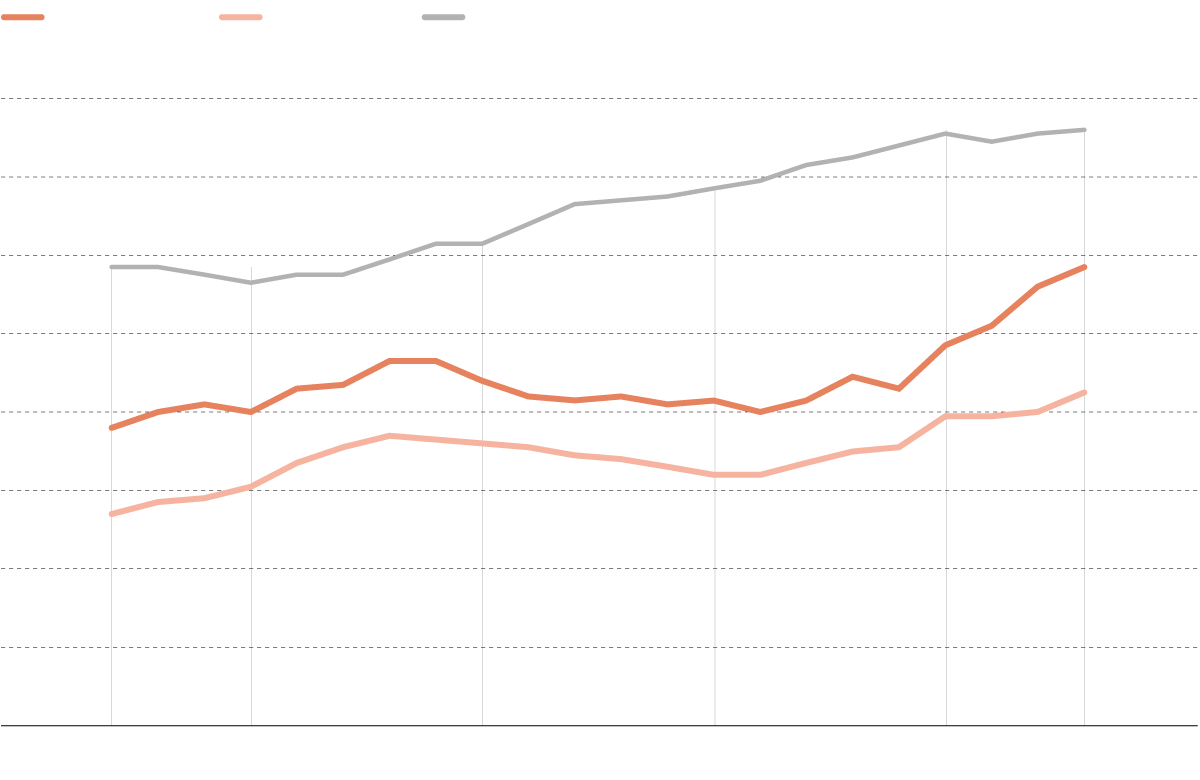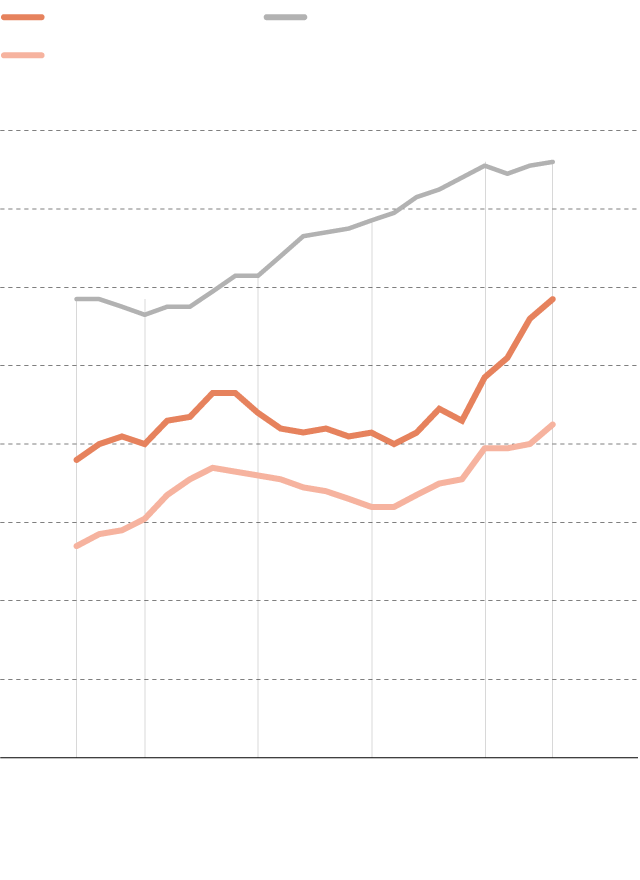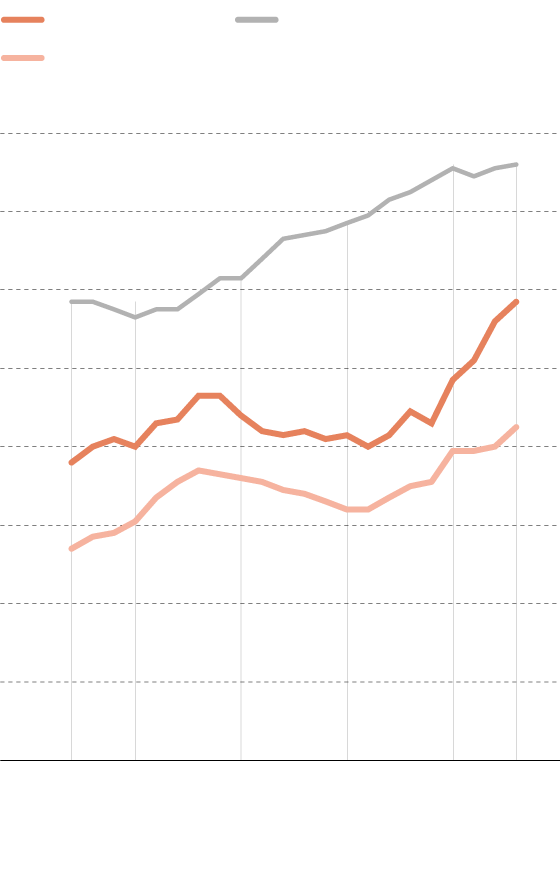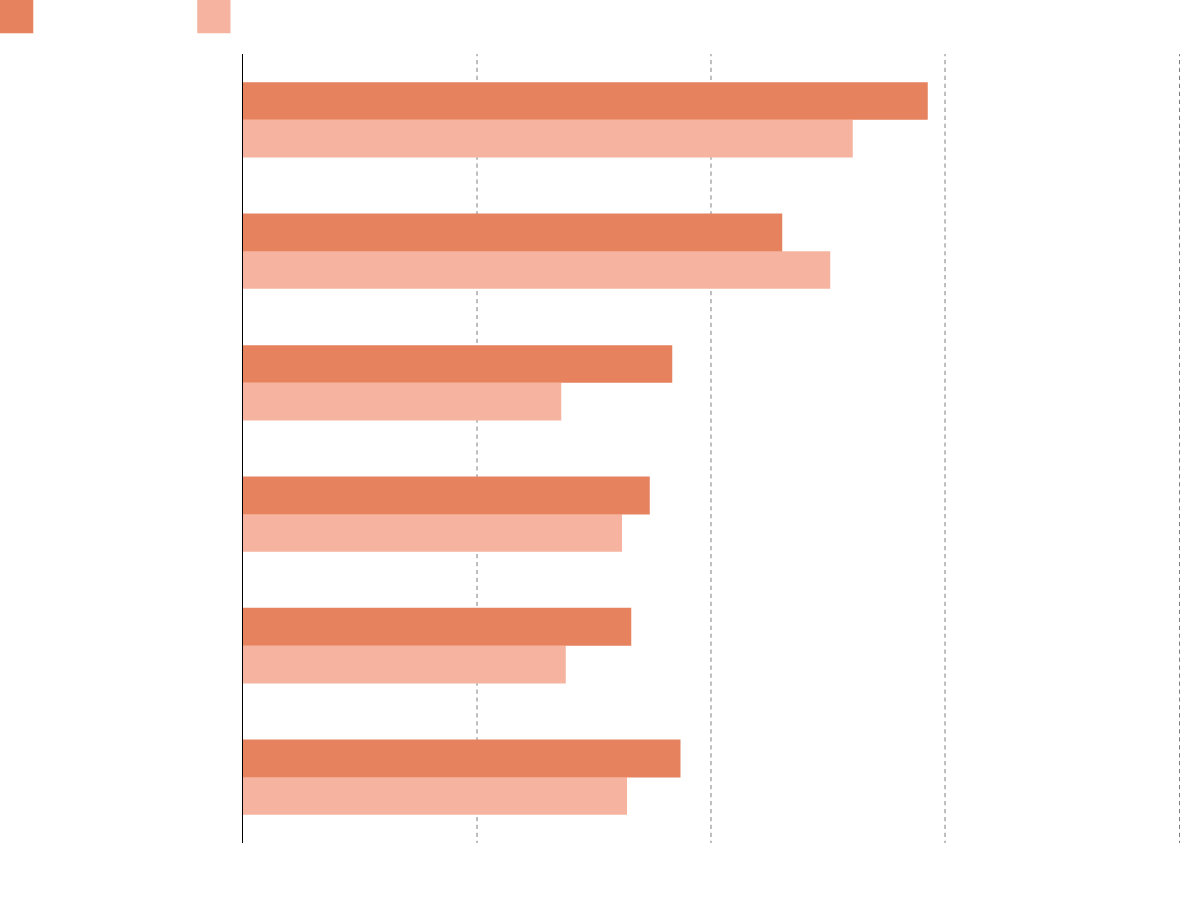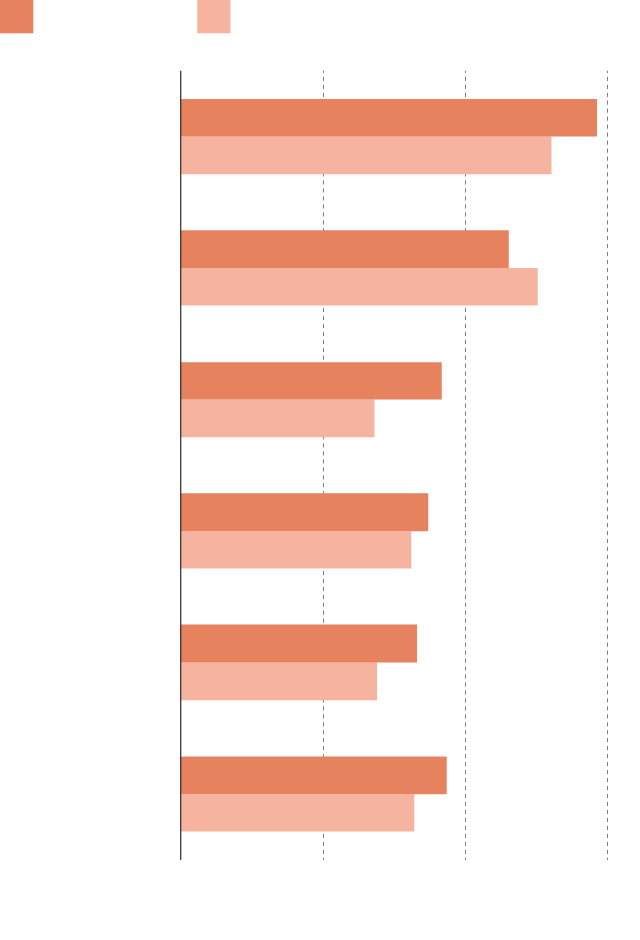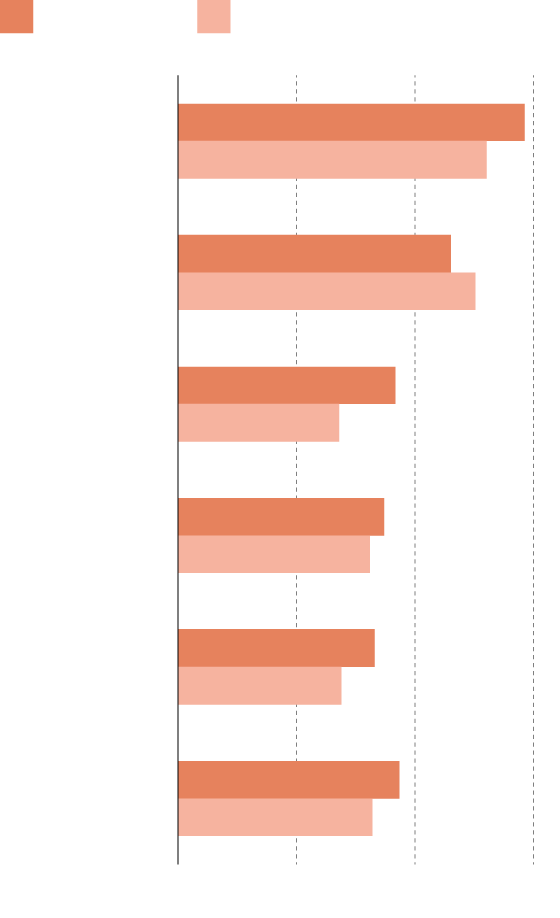Tourism drives growth, but with less force
The sector faces the challenge of focusing more on quality than quantity in an economy that requires adapting the labor market supply to the needs of companies.
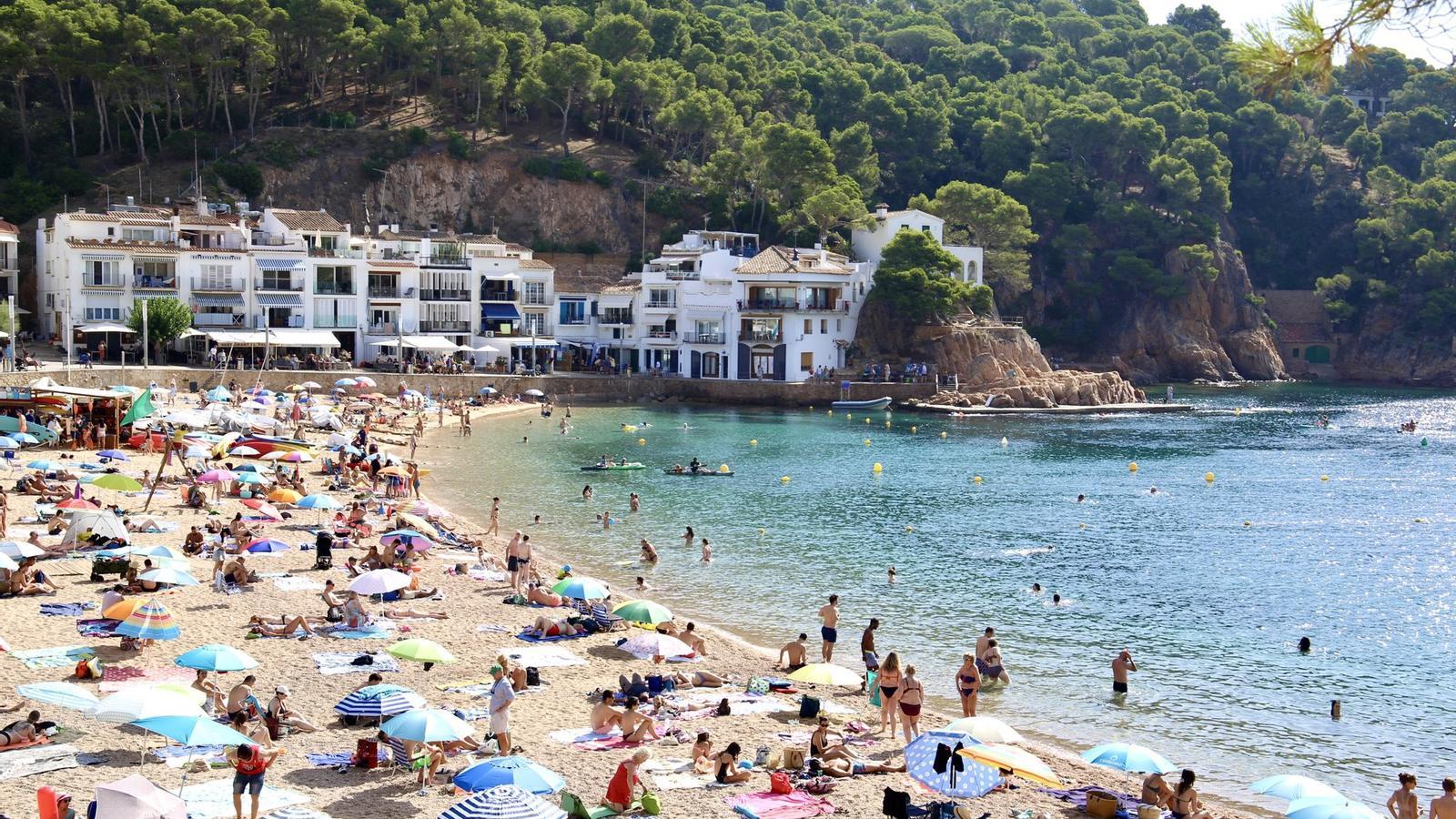

BarcelonaTourism still drives the entire Catalan economy and business, but with less intensity. This is indicated by all the forecasts, and by other analyses as well. This allows the large services sector, the one with the greatest weight in the economy as a whole, to maintain a high cruising speed (0.8%). On the other hand, industry, hospitality, and transportation remain stable (0%), catapulting the share of visitors staying in four- and five-star hotels to 56.4% of the total. On the other hand, the number of state tourists fell to 7.6 million, as the Barcelona Chamber of Commerce points out in its 2024 Economic Report. In any case, given the higher levels reached, more income will have to be adapted than from visitors, according to They warn some economics professors, as Guillem López Casasnovas.
Along these lines, in his report Situation in Catalonia. First half of 2025, BBVA Research notes a certain slowdown in tourist spending in Catalonia, which has now fallen below half of that figure from 22% last year. This slowdown is also affecting overnight stays. But all of this, according to the institution, "is due more to the fact that the sector is reaching the maximum it can handle than to public policies." It is therefore now necessary to face the challenge of growing more in quality than in quantity.
Regarding the general context, upon returning from the holidays, most companies will still be able to enjoy low interest rates, unless geopolitics disrupts the expected trend. And the most export-oriented and internationalized companies will have to keep a close eye on the United States, given the use of tariffs as a negotiating weapon by the Donald Trump administration. Looking ahead to the second half of 2025, Pimec warns that in Catalonia "administrations are likely to move in a complicated balance: on the one hand, continue implementing Next Generation funds and pro-growth policies, and on the other, begin to implement some support measures (given the required fiscal consolidation)." It continues: "Companies, for their part, will have to navigate an environment where opportunities (lower interest rates, digitalization, rising tourism) coexist with threats (volatile costs, international uncertainty, accelerated technological change)."
Population increase
The forecasts of all research organizations and services affirm that the economy will maintain a healthy pace, although slower than last year. They also include as a variable the increase in population, which stands at 8.1 million people in 2025, which contributes to maintaining a good growth rate, according to the research department of the Barcelona Chamber of Commerce. The other side of this coin is the housing shortage, with supply far below the demand for new homes and prices that continue to rise.
The Barcelona Chamber of Commerce highlights the increase in the average size of Catalan companies as the main outstanding issues for the economy and companies, which is at the bottom of the European Union (EU) and especially far behind countries like Germany, France, and Italy. Another challenge is aligning with the EU in business investment in research and development (R&D).
And finally, it is necessary to adapt the labor market's supply to the needs of companies. More than a third of Catalan companies say that the lack of adequate personnel limits their business, the highest rate in the historical series. The sectors with the greatest need for adequate personnel are construction and hospitality, but the need for personnel is most acute in industry, this organization emphasizes.
The latest economic report from the employers' association Foment del Treball highlights that growth has continued "robust," although some moderation is evident. This, it adds, is due to a slower pace of export growth, from a demand perspective, which is reflected in terms of supply in the slowdown in the industrial sector.
Pimec also highlights that services are acting as a driving force, according to its latest 2025 outlook monitoring report. With 3.6% year-on-year growth, "it is the main driver of the Catalan economy at this time." And within this area, two pillars stand out: tourism and hospitality, and technology and business services. The full recovery of international tourism, coupled with domestic demand for leisure, has meant that the tourism sector will continue to thrive in 2025. Catalonia continues to attract a large number of visitors. Many SMEs in the hospitality and catering industry are achieving good results thanks to this trend, Pimec notes.
However, there is a significant bottleneck that employers' associations and some experts continue to note in tourism-related activities: the lack of qualified personnel in hospitality and other leisure services. "This is an element that is making it difficult to maintain the desired growth rate with the desired quality. Companies are struggling to find cooks, wait staff, guides, etc., despite the still relatively high unemployment rate, which points to mismatches in training and working conditions in the sector," according to Pimec.
Industry, for its part, is showing signs of slowdown (up 2.4% year-on-year). This is essentially due to the weakness of external industrial demand, especially from Europe. A key sector such as the automotive industry is slowing down, which has a significant impact on total Catalan manufacturing exports. The European sector is at a vital moment due to the transition to electric vehicles and, now, due to US tariffs, and Catalan factories and suppliers are noticing this in their orders.
And there are certain differences in the remaining industrial sectors. Chemicals, food, and machinery manufacturing are holding up with moderate growth, while metallurgy and textiles are experiencing greater difficulties, says Pimec. This trend undermines the goal of increasing industry presence. Therefore, Pimec proposes strengthening reindustrialization and sector support measures, ranging from improvements to industrial land and logistics infrastructure to incentives for innovation and exports.
Housing prices are rising
Construction is benefiting from improved financial conditions, such as cheaper mortgages, which has boosted public works and renovations. However, permits for new construction have fallen, which predicts that housing construction will also decline in the immediate future. This translates into less supply and greater upward pressure on prices. In the short term, construction is being driven by ongoing projects and the Next Generation funds, largely allocated to energy renovation and green infrastructure, etc. The pending issue will be redirecting construction activity toward more stable, less occasional, and value-added activity: renovations in public works and social housing.
Regarding the agri-food sector, it maintains a high rate of exports and is expected to improve its focus on European and Asian markets and internationalization strategies. However, the sector faces challenges such as weather conditions (recurring droughts and extreme heat waves threaten key crops), which are putting pressure on margins. And costs such as fertilizers, energy, and transportation are also rising.
Thanks to the pace of activity, the Catalan labor market has continued to develop positively during the first half of 2025, with record numbers of social security registrations and a drop in unemployment to levels not seen for more than a decade. Last year, the driving forces of employment were commerce, transportation, and hospitality, according to the Barcelona Chamber of Commerce.
But there are signs of a slowdown, less visible to the naked eye. And also pending structural issues. The Catalan labor market has two sides. The positive side is high employment and low unemployment in historical terms, the result of economic recovery and reforms. Immigration is the key, in Catalonia, to increasing the labor force and employment. Between 2021 and 2024, immigrants (191,000 more employed) will have filled 61% of the 337,700 jobs created in Catalonia (45% in Spain), according to BBVA Research.
The downside of the Catalan labor market is the structural issues still pending: a very high level of long-term unemployment (indicative of employability and training problems), high youth and female unemployment, and low labor productivity.
Forecasts have been revised along the way, and currently outline a scenario of a gentle slowdown for the Catalan economy in the coming quarters. Households still have some capacity to consume, but it is likely to slow down somewhat compared to the beginning of the year. At the same time, the foreign sector could have a slightly negative contribution. Growth is projected to reach 2.6% in 2025, according to the government, and a perhaps more complicated 2026 could be expected, due to variables such as the evolution of US trade policies and the decisions of major central banks, especially the Federal Reserve and the European Central Bank (ECB), which will influence credit availability for the year prior to the euro and, according to BBVA Research, for the Spanish average, with 2.6% and 1.5% next year.
